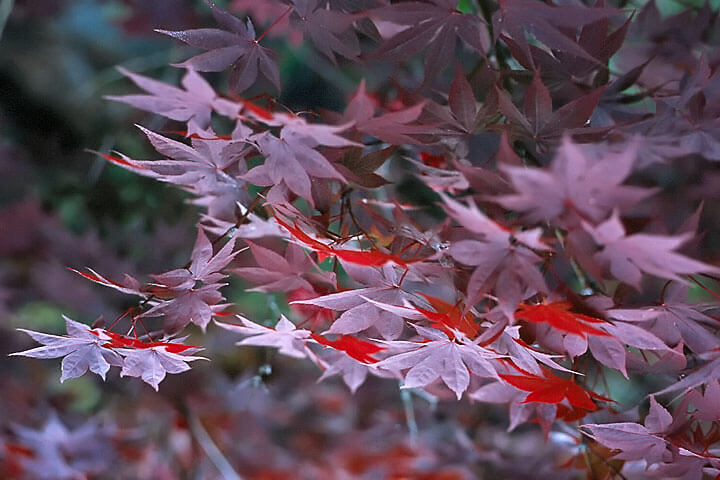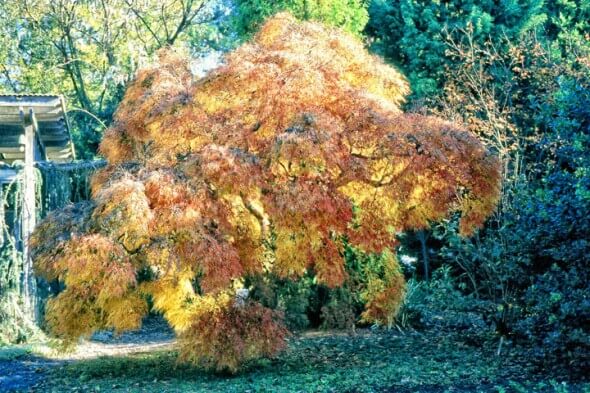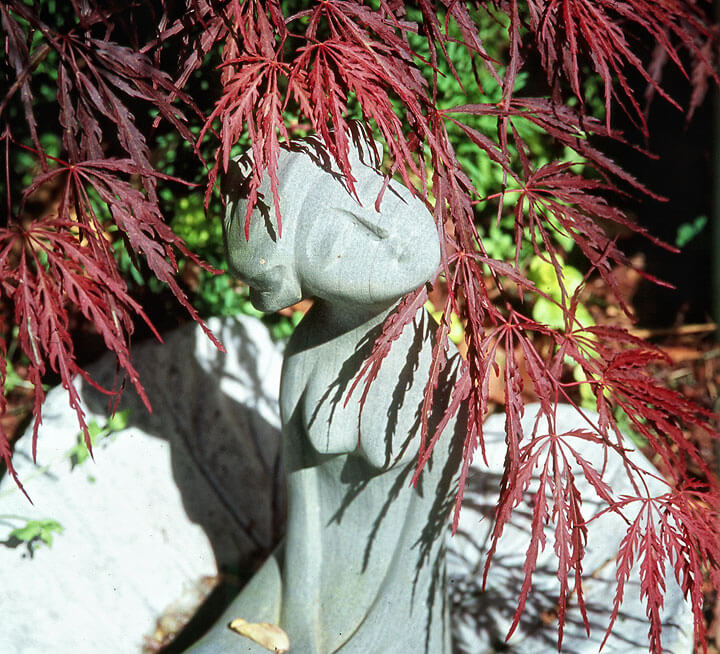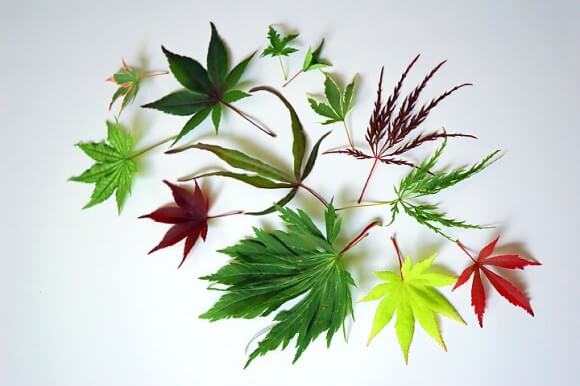
You’ve seen them exquisitely depicted in the finest gardening books, admired them in arboretum collections, and envied them in private landscapes. However, because of their delicate appearance and high price you may just wistfully sigh and pass by the Japanese maples dotting your local garden centers.
Stop. Go back and take a long look at the luxuriant Acer palmatum. Misunderstood, and much maligned, Japanese maples for southeastern gardens prove themselves to be hardier in the southern Atlantic states than you may suspect. A perfect small specimen tree for the cooler end of Zone 8 and colder, Japanese maples will offer interest in the landscape throughout the entire year.
In spring, the brilliant color of uncurling foliage coupled with dainty twin-seedpods dangling underneath yields to the fullness of their summertime canopy dancing in the rising heat. Then, as autumn days cool, the leaves once again take on new hues of gold or crimson, burning like fire against a crisp blue fall sky. When the trembling leaves finally turn loose and float down to dot the ground in winter, your attention is subsequently drawn to the arching of elegant branches, with their own sculptural quality not fully admired until laid bare.
Japanese Maple Types
There are three major Japanese maple leaf types to remember: palmate, dissectum, and linearilobum. Some sources list sub-groups of variegated, dwarf, or unusual types; but, you can find the name of most cultivars armed with an understanding of the three major leaf types.
Palmate leaves are simple, 2-5” in width and length, shaped like an open human hand, from which they get their scientific name. Slightly confusing is the fact that each leaf can have between 5-9 lobes, and some trees have leaves with various numbers of lobes residing side-by-side. Palmate foliage comes in various shades of green, red, and even variegated with pink and cream, like ‘Butterfly’. Most popular among this group of Japanese maples are ‘Bloodgood’, ‘Osakazuki’, and ‘Moonfire’. A unique cultivar to seek if you like unusual shapes is the rough curly-leafed ‘Shishigashira’, or “Lion’s mane’ Japanese maple.
Dissectum types have lacy, deeply cut, and divided leaves that can host up to 11 lobes. This group includes familiar varieties such as ‘Crimson Queen’, ‘Red Filigree Lace’, ‘Viridis’, and Acer palmatum var. atropurpureum dissectum (called APAD for short). Many gardeners wrongly associate the entire group of Japanese maples with these small dissected-leafed trees that are elegantly broader in width than height.
Linearilobum leaves are extremely narrow and pointed, appearing stretched out. Because of their elongated nature, they often droop, and this factor gives their trees a more rounded form. Sometimes called the “bamboo” maple, this group includes the elegant ‘Red Pygmy’ and ‘Shime no uchi’.
An interesting trait of linearilobum trees is that sometimes their immature leaves may appear palmate. Gardeners often mistake these misshapen leaves for sports and accidentally prune them off.
Growing Japanese Maple
The ideal planting area for a Japanese maple would be in well-drained soil, high in organic matter. A difficult spot to find in many Southeastern gardens. In sandy soil, plant your maple root ball level with the surrounding topography; however, in clay-based soils plant ‘em high. You should also amend your soil before planting. Black Gold Garden Soil is an ideal organic-rich soil amendment for tree planting. Taper the fill dirt around the root ball and create a shallow saucer of soil to retain water, then mulch with 2-3 inches of good organic mulch.
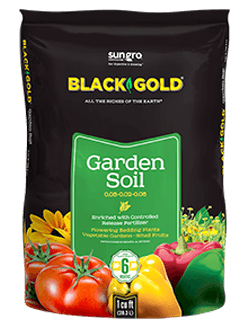 The ideal pH for a Japanese maple would be closer to neutral, but they will tolerate acidic conditions, if you add lime the first few years to get your maple established, then allow the natural acidity level to drop back down.
The ideal pH for a Japanese maple would be closer to neutral, but they will tolerate acidic conditions, if you add lime the first few years to get your maple established, then allow the natural acidity level to drop back down.
You must water your newly planted Japanese maple through the entire first year. Allow the tree to dry slightly between watering, however, in the absence of rain, give the tree at least 1 inch of water per week. Once your tree is well-established, you may never have to worry about watering, unless you are in an area experiencing drought.
An important reminder is that Japanese maples cannot tolerate wet feet. Do not allow your plant to sit in a wet hole, or it will slowly die. So, never site your maple in a swale or boggy location.
Eastern exposure where the tree will receive morning sun or filtered light is ideal. If you have had success with azaleas, this is the perfect spot to grow Japanese maples. Try to protect your maple from late afternoon sun, as this is the highest heat and light stress time of day. In summer, too much sunlight can severely damage the bark of a Japanese maple and desiccate its leaves.
When you catch Japanese maple fever, like I have, the perfect guidebook for your new passion is the updated version of JAPANESE MAPLES, by J.D. Vertrees, copyright Timber Press, 1978.
Here is a short list of popular and extremely hardy Japanese Maples
Acer palmatum ‘Bloodgood’ – This very tall deep purple-red tree is the most popular of the dark palmatum-leafed Japanese maples for good reasons. It is extremely cold hardy, resists turning bronze when planted in full sun, can reach 33’ in height, and has stunning crimson fall color (see image above).
‘Butterfly’ – A favorite variegated-leafed specimen, this tree’s palmate leaves begin green with pink margins in the spring, change to grey-blue-green with creamy variegation in summer, then morph to rosy magenta in autumn. No two leaves will be alike on this slow-growing upright 15’h x 8’w treasure. Provide it with dappled to full afternoon shade.
‘Crimson Queen’ – This popular weeping, deep-red dissected-leaf maple is a garden standard. In the hottest regions of the Southeast, its summer color can be affected by extreme heat and sun, but you will forgive the slight bronzing when you see its brilliant scarlet show in the fall. Reserve plenty of room as it can mature into a 10-feet tall by 13-feet wide mound.
‘Sango Kaku’ – The coral bark Japanese maple is just as remarkable in wintertime as the rest of the year. Also sold as ‘Senkaki’, its name means “coral tower”. This is a green-leafed palmatum that starts spring slightly reddish, and then the foliage turns from mid-green in summer to yellow-gold in fall. Remember that the bark color is most prominent on young growth, so if the tree reaches its 26-foot potential height, the color will eventually be up in its wide spreading branches. ‘Sango Kaku’ performs best in cooler regions above Zone 8.
‘Seiryu’ – Is a green laceleaf that defies all the rules. It is an upright, vase-shaped tree that grows 16-23-feet high and can spread 10-13 feet wide. The springtime canopy is apple green with reddish tips, summertime transforms it to light green, and then the astonishing fall color is golden with touches of crimson. Its name means “blue-green dragon”.
‘Shishigashira’ – Also called the “Lion’s mane” maple, is a very desirable collector’s plant. The palmate green leaves twist, curl, and crinkle into masses that remind you of the head of a mythic lion from traditional Japanese theater, especially when the leaves turn golden in fall. This slow-growing tree can reach 20-feet in height, but even when it is small it is exceptional.
‘Tamuke yama’ – A purple-red dissected-leafed cascading tree with the potential of reaching 13-feet in height that has been popular since the early 1700s. Its bright crimson spring color changes to purple-red in summer and then to glowing scarlet in the fall. Considered the best red cutleaf for full sun locations in the Southeast, this maple is named for Mount Tamuke.
‘Waterfall’ – An especially hardy bright-green Japanese maple with large dissected leaves spanning from 3-5 inches across. It tolerates heat well, turns golden red in fall, and will reach 10-feet tall by 14-feet wide. Overlapping leaves give it the natural cascading shape that inspired its name. This small tree is worth seeking.
‘Viridis’ – A mounding green dissectum that is easily confused with other similar weeping cultivars. This one is vigorous, can take a lot of heat and sun, will reach 13 feet in both directions, and turns honey golden in the fall. Not surprisingly, the cultivar name simply means “green”.
‘Aconitifolium’ – My final selection isn’t another Acer palmatum. This is a Fern-leaf maple, a real Acer japonicum. With large, deeply cut and lobed leaves that resemble Monkshood, its namesake Aconitum, this rounded 16-foot tall tree is stunning. The summer foliage is deep green, but in the fall the leaves become shades of reds that range from chili pepper to royal purple, inspiring its Japanese name, ‘Maiku jaku’ which means “dancing Peacock”.
Photos by Pam Beck


